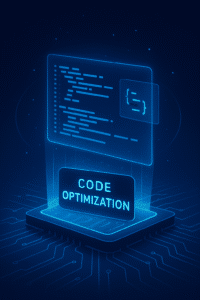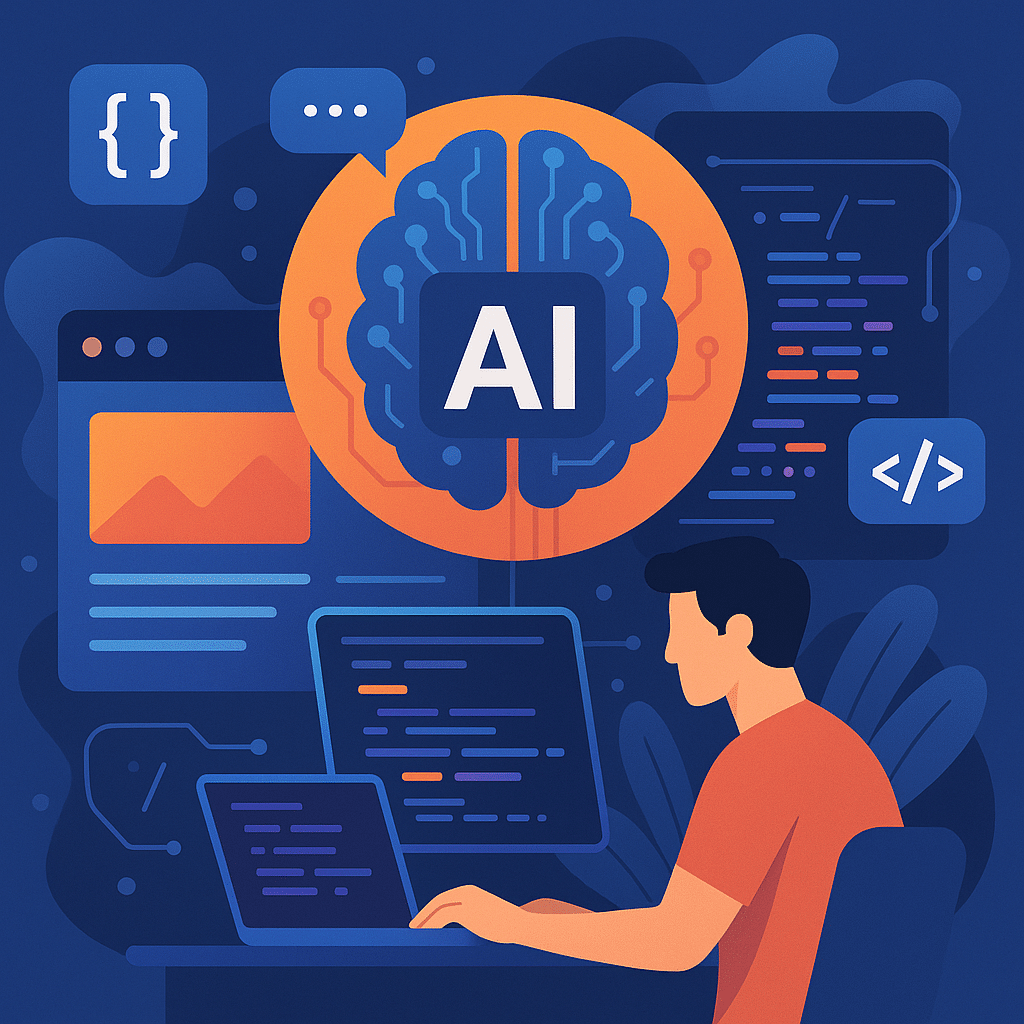Artificial Intelligence (AI) is no longer just a buzzword—it’s the engine driving the future of frontend development. From designing interfaces to generating code, testing, and optimizing performance, AI is reshaping how websites are built, how users interact with them, and how developers work.
But here’s the truth: AI isn’t replacing frontend developers—it’s transforming their role. Developers are moving from “manual builders” to “AI directors,” guiding powerful tools to create richer, faster, and more personalized experiences.
This article explores:
- ✅ How AI is revolutionizing frontend development in 2025
- ✅ The essential AI tools developers need to master
- ✅ How YOU can adapt and thrive in this new era
The Rise of AI in Frontend Development
Just a few years ago, AI in frontend development was experimental. Today, it’s mainstream. AI doesn’t just autocomplete code—it designs, builds, tests, and optimizes. Major companies like GitHub, Google, Figma, and Adobe are investing heavily, and startups are launching every month with new AI-powered solutions.
📌 What’s Driving This Change?
- Huge datasets: AI now has trillions of lines of code and UI patterns to learn from.
- Cheaper compute power: Cloud-based AI tools run faster and more affordably.
- Demand for speed: Businesses want websites live yesterday, and AI helps make that happen.
As a result, developers now spend less time on repetitive code and more time on creative direction.
AI‑Powered Code Generation: Your New Pair‑Programmer
Picture this: you type a simple comment like—
// Create a mobile-friendly navbar with logo, menu, and search
—and within seconds, AI writes the code for you. That’s the power of AI code generation.
🔥 Tools Leading the Charge
- GitHub Copilot: Autocompletes code with context awareness.
- Tabnine: AI code assistant for multiple languages.
- Codeium: A free and fast alternative to Copilot.
What it means for developers: Instead of spending hours writing boilerplate, you guide AI, review its code, and refine it to match your project’s needs.
“AI isn’t coding for you—it’s coding with you.”
Design → Code: No More Handoff Headaches
Design-to-development handoffs have always been a bottleneck. But AI is closing the gap between design tools and production code.
✨ AI Tools Bridging Design & Code
- Figma Make: Turn text prompts into UI layouts.
- Google Stitch: Conversational AI that generates code from design files.
- Builder.io & Locofy.ai: Export production-ready components straight from Figma.
Instead of waiting weeks for polished mockups, developers can now iterate with designers in real time—AI handles the “translation,” and teams move faster.
AI for Testing & Debugging: Faster, Smarter QA
Testing has always been a pain point: slow, repetitive, and easy to miss things. AI is changing that.
✅ What AI Testing Tools Can Do
- 🔍 Auto-generate test scripts.
- 📱 Run cross-device visual checks.
- 🚀 Predict potential bugs before they break production.
Top AI Testing Tools: Testim, Mabl, Reflect.run.
Instead of writing endless unit tests, developers can now focus on edge cases and UX improvements.
Personalization & NLP: Websites That “Understand” You
AI doesn’t just write code—it powers more intelligent user experiences. Today’s sites can adapt to each visitor, thanks to personalization and NLP (natural language processing).
- Dynamic layouts: Content changes based on your behavior.
- Chatbots & voice interfaces: Sites “talk back” using AI NLP tools.
- Sentiment-based UX: Websites adjust tone depending on the user’s mood or intent.
Think of Spotify recommending playlists or Netflix suggesting shows—that’s AI-driven personalization in action.
AI for Performance, Accessibility & SEO
AI isn’t just for building websites—it’s for making them faster, easier to use, and search-friendly.

💡 What AI Optimizes
- Performance: AI flags slow scripts, suggests lazy loading, compresses images.
- Accessibility: Generates alt-text, checks color contrast, ensures keyboard navigation.
- SEO: Recommends keywords, writes meta descriptions, improves content structure.
Result: Developers can focus on creativity, while AI handles the tedious optimization tasks.
How AI Is Changing the Role of Frontend Developers
Will AI replace frontend developers? No. But it will change what they do.
- ❌ Less time writing repetitive code.
- ❌ Less time handling manual optimization.
- ✅ More time directing AI output.
- ✅ More time designing innovative user experiences.
Frontend developers are becoming AI orchestrators—deciding what to build and using AI to build it faster.
How to Thrive as a Developer in the AI Era
Want to stay relevant in this fast-changing landscape? Here’s how:
- ✅ Master AI tools: Learn GitHub Copilot, Figma Make, Testim.
- ✅ Focus on creativity: AI can code, but it can’t dream. Your imagination is the key.
- ✅ Learn AI APIs: Integrate chatbots, personalization, and analytics features.
- ✅ Be ethical: Understand privacy laws (GDPR/CCPA) and AI bias concerns.
- ✅ Build hybrid portfolios: Show off projects where AI and human vision combine.
“Developers who guide AI will lead the future of the web. Developers who ignore it will be left behind.”
The Future: What’s Next?
- 🚀 AI + Design Fusion: Instant conversion of design sketches to production code.
- 🌐 AI Micro-frontends: AI orchestrating multiple frontend systems seamlessly.
- 🎯 Ultra-personalized UX: Every visitor sees a website that feels custom-built for them.
AI isn’t slowing down—and neither should you.
🔥 Conclusion: AI Is Your Superpower
By 2025, AI is woven into every part of frontend development. It codes, designs, tests, and optimizes. But it still needs you.
- ✅ AI writes code—but you decide what stays.
- ✅ AI suggests designs—but you craft the experience.
- ✅ AI tests and optimizes—but you provide vision.
👉 Embrace AI. Experiment with it. Lead with it. The future of frontend belongs to the developers who see AI not as a threat—but as a superpower.



















